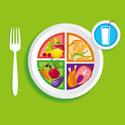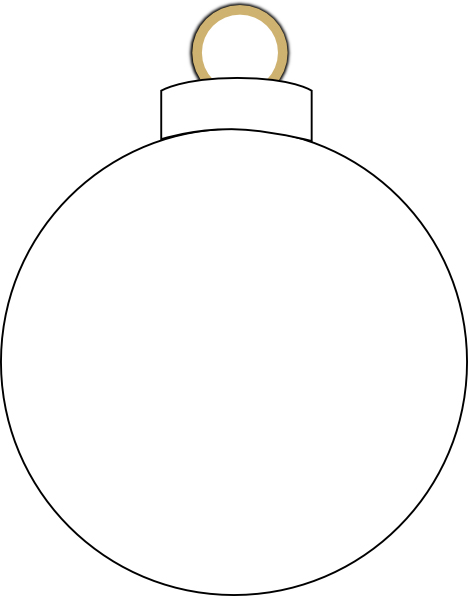Humanitarian aid tree
Learning outcomes
This activity encourages students to develop:
- Awareness and an understanding of the difference between needs and wants;
- An understanding of basic and universal human needs;
- Knowledge of Canadian Armed Forces' (CAF) contribution at home and abroad, and Remembrance of those who have served; and
- Awareness of children’s rights.
Target audience
This activity is aimed at youth aged 12-18 years.
Introduction
With your students, discuss how sometimes people cannot get the things they really need like food or water, because of natural disasters or war, so the Canadian Armed Forces help them. Brainstorm examples.
The holiday season is a time for gift giving. Wouldn’t it be a fitting time to remember those who serve in the Canadian Armed Forces and give so much?
One way to remember them would be by having a tree, and hanging humanitarian aid ornaments, to highlight some of the gifts they have given to people in need, here in Canada and around the world.
Classroom materials
- Artificial or real holiday tree
- Humanitarian ornaments sheet
- Needs/wants chart
- Rights of the child sheet
- Historical information sheets
a) Where have our needs been taken from us or others, and when have the CAF helped?
Sometimes people can’t get the things they need such as water, shelter or food, and sometimes their rights are taken away. Sometimes this is due to natural disasters, and sometimes this is due to political unrest or war in different countries. This is when the Canadian Armed Forces step in to give the gift of humanitarian aid—and they do this 365 days a year. Some of the places they have served are:
- Balkans (helping hospital residents who had been abandoned due to nearby fighting)
- Cambodia (providing aid after volcanic eruption and mudslide in 1985 distributing toys and working in a children’s centre)
- East Timor (rebuilding a police academy)
- Ethiopia and Eritrea (distributing clothes, school supplies, sports equipment and toys)
- Haiti (visiting orphanages, building a school, helping the sick and elderly)
- Somalia (helping the sick and starving in medical clinics)
- Sri Lanka (helping in the aftermath of 2004's Indian Ocean tsunami)
- United States (helping in the aftermath of 2005's Hurricane Katrina)
- Canada (helping during Manitoba and Quebec floods, major winter storms, western forest fires, etc.)
- Rwanda (political upheaval in the mid-1990s)
- Honduras (Hurricane Mitch in 1998)
- Turkey (massive earthquake in 1999)
- Newfoundland and Labrador (Hurricane Igor in 2010)
- Middle East/Canada (Helping Syrian refugees in 2015-2016 with Operation Provision)
Divide your class up into groups and assign them a research topic among those listed above and provide the links to the historical sheets. Students could find additional informations online or consult the Department of National Defence sections « Current Operations » or « Past Operations ».
Students should be able to present the following information: Where did the CAF serve? When? Why were they deployed there? How did the CAF help the local population?
b) What are our needs?
This publication is available upon request in alternate formats.
PDF version
Some of us during the holiday season make lists of things we would like for ourselves or to buy for others. There are many things in life we all want, but don’t always need. Needs and wants — what is the difference? Display this chart on your smartboard or classroom screen. Circle the things we actually need in red, and the things we may just want in yellow and lead a discussion with the students.












c) What rights do we have to those needs?
The United Nations Universal Declaration of Human Rights and Convention on the Rights of the Child are in force around the world. They are designed to protect the lives and dignity of individuals and children (defined as those under age 18). Display the children’s rights on your smartboard or classroom screen, or print them off and hand them out.
Then hold a classroom discussion. How would it feel to have one… or all of those rights taken away? What would it be like to have no water? No clean water? No health care? When could this happen in Canada?
Children's rights
Children’s rights include:
- the right to reasonable health, including access to nutritious food, clean drinking water and a safe environment
- the right to a name, a nationality and, as far as possible, to know and be cared for by parents
- the right to keep your own identity
- the right to a standard of living that allows appropriate physical, mental, spiritual, moral and social development
- the right to an education
- if disabled, the right to appropriate special care
- the right to have access to information and materials from a wide variety of sources (books, magazines, online)
- the right to freedom of thought, conscience and religion
- the right to your own culture and language
- the right to freedom of expression
- the right to be treated with humanity and respect
- the right not to be subjected to torture or other cruel treatment.
Print a Wallet card of children's rights.
d) Prepare your ornaments
This publication is available upon request in alternate formats.
PDF version
Once your students have completed their research on their humanitarian mission, pass out the ornaments handout.
Have them cut out the ornament. On the front of the ornament, they could write the mission name, and where it took place. On the back of the ornament, they could write what happened. What rights were taken away, what needs weren’t met? What did the Canadian Armed Forces give to help? If there’s more than one need not met, or more than one right taken away, they can prepare several ornaments. If they choose, they could colour them, maybe with the flag of the country, or style of their choice.

Once completed, the students can hang the ornaments on the tree. When the tree is fully decorated, the students can visit the tree to read what the Canadian Armed Forces have done on other missions. They will develop an appreciation and an understanding of all that the Canadian Armed Forces do to help in Canada and around the world.
Perhaps this activity will inspire your students to thank a Canadian Armed Forces member, or to find a way to give to a cause in your community.
- Date modified: